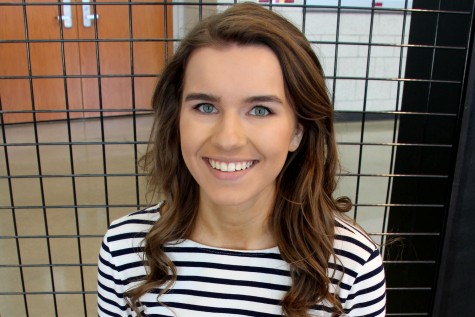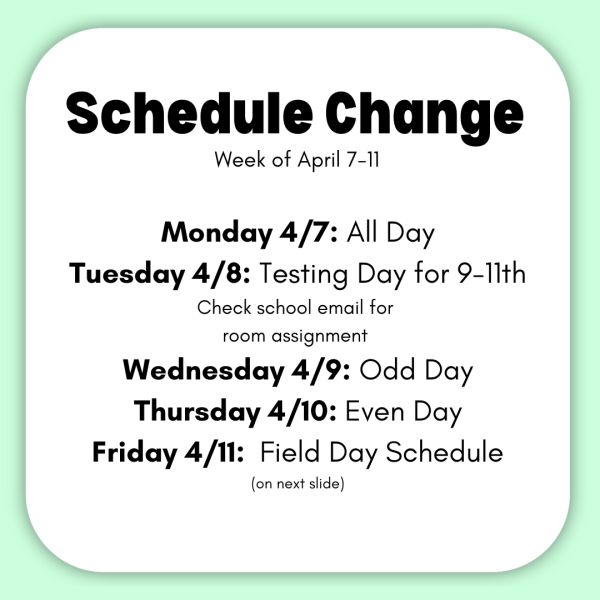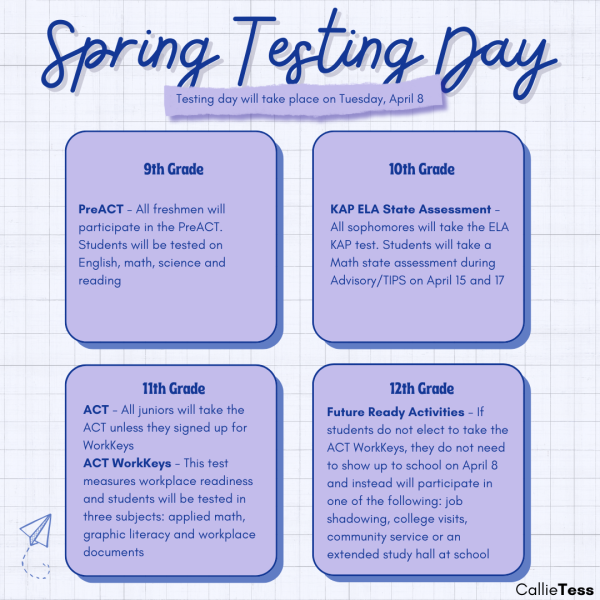Olathe raises tobacco product purchasing age
When senior Jacob Block turned 18, he was welcomed to the newfound freedoms of voting, buying lottery tickets, enlisting in the army — and purchasing tobacco products. For Block, tobacco products, such as electronic cigarettes, provide a calming sensation while avoiding the effects of conventional cigarettes. But due to a recently passed law, Block’s accessibility to such products will be restricted for the next three years.
On Tuesday, Feb. 2, Olathe City Council voted six to one to raise the legal purchasing age of tobacco products from 18 to 21. The law went into effect on Saturday, Feb. 8. Olathe is the latest municipality in the Kansas City metropolitan area to change the legal purchasing age. In November 2015, city councils in Kansas City, Missouri; Kansas City, Kansas and Wyandotte County voted almost unanimously to increase the age requirement, and Independence, Missouri followed suit the following December. The changes came after the Greater Kansas City Chamber of Commerce and Blue Cross and Blue Shield of Kansas City launched the Tobacco|21 KC campaign, which aims to curb teen’s exposure to the harmful effects of tobacco through raising the purchasing age in all municipalities in the metro area.
“I think raising the age will make it more difficult for younger kids to have access to [tobacco products], and because nicotine is addictive, it changes your brain chemistry and how your brain functions,” nurse Mitzi Edwards said. “[Nicotine] can prime the brain to be more quickly addicted to other substances. Our brains continue to develop until we are 25 years of age, so the older we can set that limit to where our developing brains aren’t exposed to the those chemicals, the better.”
According to the National Survey on Drug Use and Health, more than 80 percent of adult smokers started smoking before the age of 18, a point that the initiative highlights in encouragement of raising the purchasing age to 21. However, with only five of the over 100 municipalities in the metro area passing the law, Block said the law’s effects will be negligible until more widespread change is established.
“A lot of kids go between Overland Park and Olathe all the time, so I don’t really think [the law] is going to change anything,” Block said. “I think you have to change the whole [county] for it to really start taking an effect on people being able to have the products. I don’t think that having one city here and there is going to do much at all because people can drive 20 minutes to another city.”
Jon Harris, manager of Vape Attic in Olathe, said about 20 percent of his store’s business comes from the 18 to 21 age demographic. When Kansas City changed its purchasing age, Harris saw an influx of traffic to his store from the Kansas City area and even heard talk from customers about moving to other cities to avert such laws. Although Harris said he’s expecting a decrease in sales, he said the only current smokers under 21 the law will affect are the ones unwilling to have someone over 21 purchase tobacco products for them.
“The thing is, kids who are going to smoke will smoke anyway,” Harris said. “I’ll be honest, some of the kids who come in when they turn 18 talk to me about how they were sending their parents in for the last two years, so a lot of them are just repeating the process of sending people in to get what they need.”
Harris said electronic cigarettes appeal to the younger demographic because of the variety of vapor flavors and users’ abilities to do tricks with the vapor, but he also sees even younger smokers turning to electronic cigarettes to move away from cancer-inducing traditional cigarettes. Harris said he thinks it’s unfair for electronic cigarettes to be included under the law, as he said perceptions about their health effects are misconstrued.
“I think the whole lumping of vaping with tobacco is crazy, but of course, a lot of people don’t understand that,” Harris said. “I’ve been making vape juice for three years, and I can honestly say, because I know everything that goes into it from the neck down, that if you were to walk into a congested highway in the middle of rush hour and breathe in the fumes from the cars, that would be 100 times worse than anything you could put into your body vape wise.”
Harris said he’s attended numerous city council meetings to speak against the inclusion of electronic cigarettes in the law. While the ingredients used in the juice at Harris’s store include nicotine and three vegetable-based extracts, Edwards said the problem with electronic cigarettes is the ingredients put into the juice currently aren’t regulated nationally, which means users could be consuming dangerous chemicals unknowingly.
“Some [electronic cigarettes] have already been found to contain small amounts of formaldehyde, which is a poison, and small amounts of other chemicals that are very dangerous, but there’s no regulation, so we don’t really know what kind of things we are going to see,” Edwards said. “Just like when cigarettes first came out, we did not know how lethal they are, and I believe 15 years down the road, we will see that the e-cigarettes are much worse than we anticipated in the first place.”
School resource officer Lance Balderston said if Overland Park decides to adopt the elevated purchasing age, the law won’t have any effect on the district policy for tobacco use at school. Under Blue Valley Board of Education Policy 3515, students and faculty are prohibited from using, distributing or possessing tobacco products “on all district-owned buildings, on all grounds and athletic facilities, in district-leased facilities, on school buses and in all vehicles owned or leased by the school district.”
The baseline fine for a student caught with a tobacco substance on school property is $25, but additional violations, such as smoking indoors or sharing the product with another student, can increase the ticket to upward of $200. Students infringing on district tobacco policies additionally receive an out-of-school or in-school suspension up to 10 days long. But despite a variety of disincentives, Balderston said he often finds the same students being penalized.
“Some of the same kids get caught over and over,” Balderston said. “I have a drawer full of different vape pens — some of them are from the same kids. They just don’t quite get it. Vaping devices will be confiscated, so if they have some elaborate e-cig, they lose it. So not only do they get the ticket, have to go to court, pay the fines and suffer school consequences, but they just spent $150 on that e-cig.”
Balderston said while the number of students caught using cigarettes and other tobacco products on school property has decreased in the six years the school has been open, the number of electronic cigarette-related violations has increased in recent years. This prompted the district to modernize its policy in 2014 and add electronic cigarettes to its list of banned tobacco substances. Balderston said he thinks until the district adopts stricter punishments, students will continue to use tobacco products at school.
“If [the district] had stiffer penalties, it’d take one or two people to get popped with [the consequences] before everybody decides it’s not worth it to bring it to school,” Balderston said. “The kids who are doing it, they’re taking money out of mom and dad’s pocket [to pay the fines], so my thought would be to require community service and some educational classes on tobacco products. If you make it unappealing and put the punishment out there, they might be less likely to attempt it.”
According to a 2014 study by the Centers for Disease Control and Prevention, 24.6 percent of high school age students have used tobacco products within the past 30 days. Cigarette use among high school students reached an all time low in 2013, with a smoking rate of 15.7 percent. Edwards said while changing the legal purchasing age doesn’t account for underlying factors of teen tobacco use, such as teens not being adequately educated about the dangers of tobacco, she thinks changing the age is a positive step in decreasing tobacco use.
“There’s definitely some maturing that goes on between the ages of 18 and 21, a lot of times, once people are out of high school and move on and go to college, they may view things differently and think about the purchase and consequences more critically than an 18 year old,” Edwards said. “But with the addictive nature of nicotine, and your body getting to where it needs it and craves it and you begin to feel side effects when you don’t use it, people will always find ways to get it. I think it’s a good idea to raise the age, but it won’t be a perfect solution.”












